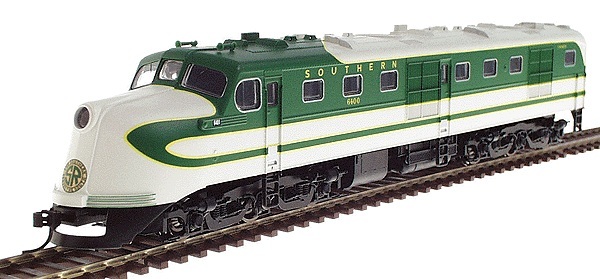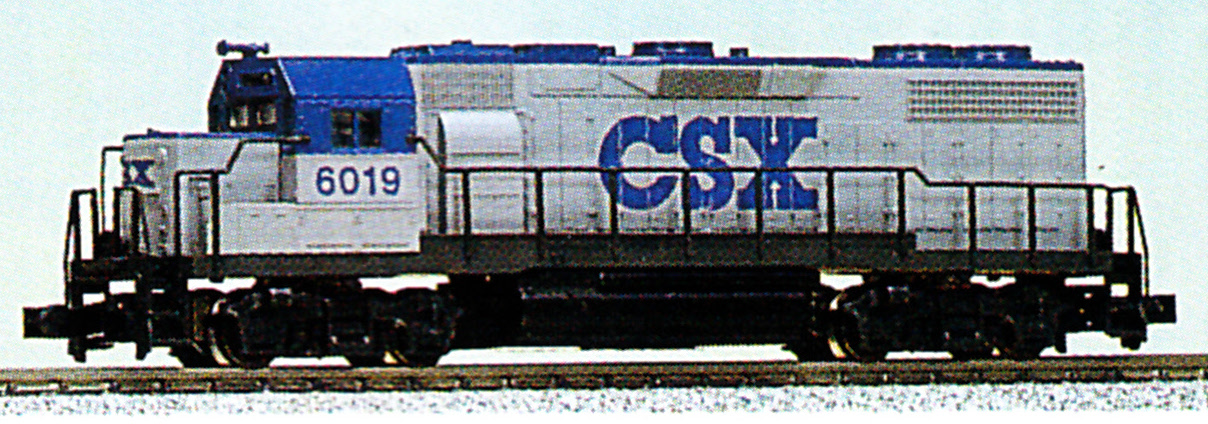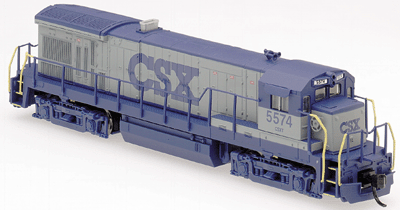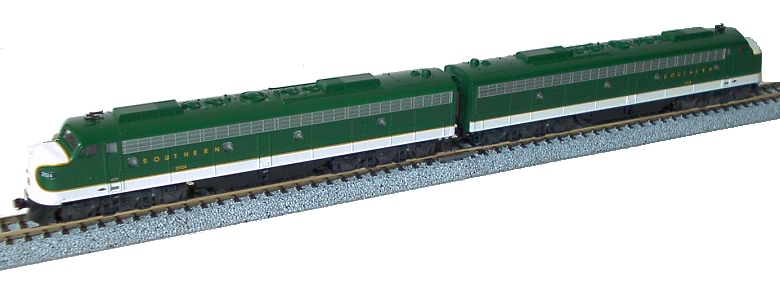Model Information: From the Kato Wesbite:
Built in 1948, the 4-6-4 C62 Steam Locomotive is one of the most popular passenger steam locomotives in Japan. When it was designed, the C62 was built around the existing D52 freight boiler, whose large size required equally large drivers. As a result, the C62 was the fastest and most powerful high-speed passenger steam locomotive of its day.
It was used for the famous express trains ?Tsubame? (Swallow) and ?Hato? (Pigeon), which it pulled on the Japanese mainline between Tokyo and Osaka until 1956 ? this service granting C62 #2 its signature Swallow emblems which it wears on its smoke deflectors. After the retiring from the main line, C62 #2 was used in the northern Japanese island of Hokkaido until early 1970?s, where its glorious history as a high speed passenger locomotive make it a popular sight, and eventually granted it a place of honor at the railroad museum in Kyoto.
Built in 1948, the 4-6-4 C62 Steam Locomotive is one of the most popular passenger steam locomotives in Japan. When it was designed, the C62 was built around the existing D52 freight boiler, whose large size required equally large drivers. As a result, the C62 was the fastest and most powerful high-speed passenger steam locomotive of its day.
It was used for the famous express trains ?Tsubame? (Swallow) and ?Hato? (Pigeon), which it pulled on the Japanese mainline between Tokyo and Osaka until 1956 ? this service granting C62 #2 its signature Swallow emblems which it wears on its smoke deflectors. After the retiring from the main line, C62 #2 was used in the northern Japanese island of Hokkaido until early 1970?s, where its glorious history as a high speed passenger locomotive make it a popular sight, and eventually granted it a place of honor at the railroad museum in Kyoto.
- New steam locomotive mechanism uses a coreless motor for silky smooth side-rod motion and creeping speeds at low voltages.
- New steam locomotive mechanism uses a coreless motor for silky smooth side-rod motion and creeping speeds at low voltages.
- Details specific to #2 are present, such as the Swallow emblems printed on the smoke deflectors and the white stripe that runs the length of the running board.
- Operational head and tail lights with Kato?s flywheel drive on the powered cars.
- Optional knuckle couplers are included along with a swappable double heading coupler on the front.
Road Name History:  Japanese National Railways (日本国有鉄道 Nihon Kokuyū Tetsudō), abbreviated Kokutetsu (国鉄) or "JNR", was the business entity that operated Japan's national railway network from 1949 to 1987.
Japanese National Railways (日本国有鉄道 Nihon Kokuyū Tetsudō), abbreviated Kokutetsu (国鉄) or "JNR", was the business entity that operated Japan's national railway network from 1949 to 1987.
By 1987, JNR's debt was over ¥27 trillion ($280 billion at 2009 exchange rates) and the company was spending ¥147 for every ¥100 earned. By an act of the Diet of Japan, on April 1, 1987 JNR was privatized and divided into seven railway companies, six passenger and one freight, collectively called the Japan Railways Group or JR Group.
From Wikipedia

By 1987, JNR's debt was over ¥27 trillion ($280 billion at 2009 exchange rates) and the company was spending ¥147 for every ¥100 earned. By an act of the Diet of Japan, on April 1, 1987 JNR was privatized and divided into seven railway companies, six passenger and one freight, collectively called the Japan Railways Group or JR Group.
From Wikipedia
Brand/Importer Information: Kato Precision Railroad Models (関水金属株式会社 Sekisui Kinzoku Kabushikigaisha) is a Japanese manufacturer of model railroad equipment in N and HO scales. The Tokyo-based company manufactures models based on Japanese prototypes (such as the Shinkansen bullet train) for the Japanese market, North American prototypes for the North American market and European high-speed trains for European market.
The Kato (pronounced kah-toe) model railroad companies were founded by Yuji Kato, father of current president Hiroshi Kato, of the parent company Sekisui Kinzoku Co., Ltd.
The design and distribution of models for the North American market are handled by their U.S. subsidiary, Kato USA, located in Schaumburg, Illinois.
The design of special models for the European market is handled for some of them by their partner, Lemke, whereas the general distribution of Kato products in Europe is handled by NOCH; both companies are located in Germany.
As a result, some Kato European models are sold as Kato Lemke and others as Kato (alone).
The Kato (pronounced kah-toe) model railroad companies were founded by Yuji Kato, father of current president Hiroshi Kato, of the parent company Sekisui Kinzoku Co., Ltd.
The design and distribution of models for the North American market are handled by their U.S. subsidiary, Kato USA, located in Schaumburg, Illinois.
The design of special models for the European market is handled for some of them by their partner, Lemke, whereas the general distribution of Kato products in Europe is handled by NOCH; both companies are located in Germany.
As a result, some Kato European models are sold as Kato Lemke and others as Kato (alone).
Item created by: CNW400 on 2024-04-03 09:47:20
If you see errors or missing data in this entry, please feel free to log in and edit it. Anyone with a Gmail account can log in instantly.
If you see errors or missing data in this entry, please feel free to log in and edit it. Anyone with a Gmail account can log in instantly.








